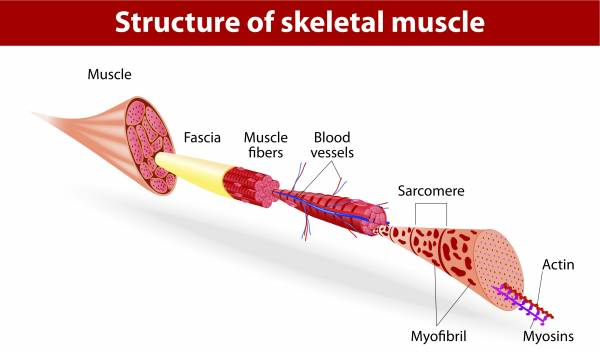Trigger Points
For everything you need to know about Trigger Points and the whereabouts, click on: TriggerPoints.net
So what is a Trigger Point?
Trigger Point Definition:
"A highly irritable localised spot of exquisite tenderness in a nodule in a palpable taut band of (skeletal) muscle." - Dr Janet Travell & Dr David Simons (1998)
Muscles containing trigger points are fatigued more easily, and don't return to a relaxed state as quickly when use of the muscle ceases. A Trigger Point is what most people refer to as a "knot" in the muscle fibers, Trigger points (TPs) can be anywhere in the body but they can cause an amazing amount of pain. Pain caused by trigger points may be the largest cause of pain and muscle dysfunction in the world
When a muscle contracts, the contraction is actually happening in a microscopic unit called a sarcomere. To make your muscle contract, even for the smallest movement, thousands of sarcomeres have to contract first.
A Trigger Point builds when sarcomeres are unable to release their contraction. Your brain has stimulated you to stop using the tightened muscle(oxygen starvation). The projected pain from the primary Trigger Point produces a guarding reflex which overloads the muscles in that area.
Because these little fibers are contracted so tightly, they've forgotten how to relax therefore cutting off blood and oxygen supplies, causing pressure on nerves, inflammation, restricted movements and pain, decreasing flexibility in the process and therefore affecting endurance and performance while also increasing the risk of injury.
Voluntary (skeletal) muscle is the largest single organ in the body and accounts for almost 50% of body weight. There are up to 400 main muscles listed that can cause trigger point pain and motor dysfunction. Symptoms can range from intolerable agonizing pain caused by "active" trigger points, (present discomfort) to painless restriction of movement and distortion of posture from "latent" trigger points ( underlying discomfort).
If the trigger point is "active," it will refer pain or other sensations. If it is "latent," it may cause a decreased range-of-motion and weakness.
Active trigger points often start with some impact to the muscle, such as an injury, poor posture or body mechanics, repetitive use, or a nerve root irritation. Any of the perpetuating factors can also indirectly activate trigger points and make you more prone to developing trigger points that are initiated by impacts to muscles. Active trigger points may at some point cease causing pain, and become latent. Latent trigger points can easily return to being active trigger points, often leading the patient to believe they are experiencing a new problem, when in fact it is an old problem being re-aggravated. Latent trigger points can be reactivated by overuse, over-stretching, chilling, or any other of the perpetuating factors.
Some of the Trigger Point Conditions:

How do I know it is a Trigger Point?
You are looking for:
- Spot tenderness (exquisite pain)
- Stiffness in affected muscle
- A palpable taut/tight nodule or band
- Presence of referred pain (as indicated on the trigger point maps showing you where you should feel pain when pressed)
How Trigger Points Are Formed
The damage to muscle and connective tissue which results in trigger points can occur several ways. It can happen as the result of:
- Repetitive overuse injuries (using the same body parts in the same way hundreds of times on a daily basis) from activities such as typing/mousing, handgeld electronics, gardening, home improvement projects, work environments, etc.
- Habitually poor posture due to our sedentary lifestyles, de-conditioning and poorly designed furniture.
- Sustained loading as with heavy lifting, carrying babies, briefcases, boxes, wearing body armor or lifting bedridden patients.
- Muscle clenshing and tensing due to mental/emotional stress.
- Direct injury such as a blow, strain, break, twist or tear (e.g car accidents, sports injuries, falls, etc.)
- Surprisingly, trigger points can even develop due to inactivity such as prolonged bedrest or sitting.

Sarcomeres are the ultimate source of all movement. And they are pure organic chemistry. You'll learn why pressing on patches of stuck sarcomeres (Trigger Points) "hurts like hell but feels like heaven."
Further Reading:

